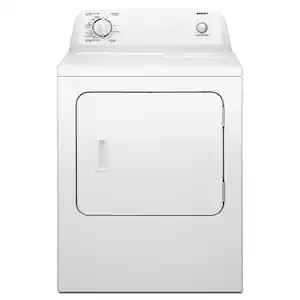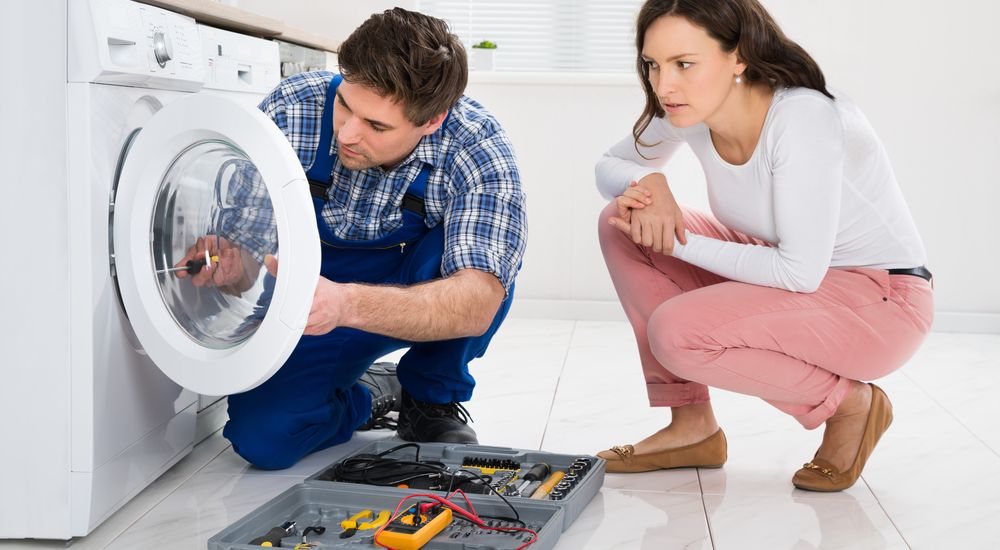Working time:
Monday to Saturday: 8:00 A.M. – 7:00 P.M.
Sunday: 9:00 A.M. - 4:00 P.M.
Working time:
Monday to Saturday: 8:00 A.M. – 7:00 P.M.
Sunday: 9:00 A.M. - 4:00 P.M.
Client Services:
Client Services:
GE Dryer Repair
GE dryers are trusted for their efficiency and durability, but even the most reliable appliances can encounter issues over time. Common challenges include failure to heat, extended drying times, or unusual noises. Addressing these problems promptly ensures your dryer operates efficiently and helps avoid further complications. Below, we’ve outlined common issues, troubleshooting steps, and solutions to restore your GE dryer to optimal functionality.

Common Problem
GE dryers often face challenges like the dryer not heating adequately, taking longer to dry clothes, or unusual operational noises. These problems can arise due to regular use, wear and tear, or environmental factors. If your GE dryer stops working efficiently, it could result from issues such as a faulty heating element, a malfunctioning thermal fuse, or airflow restrictions caused by lint buildup in the venting system.
Ignoring these symptoms may lead to more significant operational failures. Routine maintenance, such as cleaning the lint filter and inspecting the vent, can prevent many of these problems. However, if issues persist, identifying the root cause promptly will help restore your dryer’s performance and prevent costly repairs.
GE Clothes Dryers Troubleshooting
If your GE dryer isn’t heating, check for a blown thermal fuse, a faulty heating element, or issues with the high-limit thermostat. Inspect the electrical connections to ensure they are secure, and test the timer or control board for faults if needed.
Clothes taking too long to dry may result from a blocked lint trap or clogged exhaust vent. Clean the lint filter after each use, inspect the vent hose for obstructions, and ensure the exhaust vent outside is clear.
If the dryer makes banging, squeaking, or grinding noises, it could be due to worn drum support rollers, a damaged belt, or loose components. Inspect the drum and drive system for wear and ensure all parts are properly secured.
Overheating might indicate a clogged vent system or a malfunctioning thermostat. Clean the vent thoroughly and test the thermostat for faults. A damaged heating element may also cause overheating and should be inspected and replaced if necessary. If your GE dryer won’t start, confirm that it is properly plugged in and receiving power. Check the door latch and ensure it closes securely. If the issue persists, inspect the start switch, timer, and control board for any faults.
Top 6 Problems and Solutions for your GE dryer
Dryer Not Heating
1. Inspect the heating element for visible damage
2. Test the thermal fuse for continuity
3. Check the high-limit thermostat for functionality
4. Ensure proper connections to the power supply
5. Replace any faulty components
Clothes Not Drying Properly
1. Clean the lint filter thoroughly
2. Inspect the vent hose for clogs or obstructions
3. Check the exhaust vent for blockages
4. Ensure proper airflow inside the drum
5. Replace a damaged blower wheel
Unusual Noises During Operation
1. Inspect the drum support rollers for wear
2. Tighten or replace a loose drive belt
3. Check for foreign objects in the drum
4. Examine the motor for potential faults
5. Replace worn-out drum bearings
Dryer Overheating
1. Clean the vent system thoroughly
2. Test the high-limit thermostat
3. Check the heating element for damage
4. Inspect the blower housing for debris
5. Replace any faulty thermostats
Dryer Not Starting
1. Verify the power supply and outlet
2. Inspect the door latch mechanism
3. Test the start switch for continuity
4. Check the timer and control board
5. Ensure the circuit breaker is not tripped
Dryer Shutting Off Mid-Cycle
1. Clean the lint filter to improve airflow
2. Check the vent system for clogs
3. Inspect the motor for overheating
4. Test the cycling thermostat for faults
5. Replace a damaged moisture sensor
Additional GE Dryer Troubleshooting Techniques
For dryers that overheat or fail to dry clothes efficiently, ensure the venting system is completely clear of lint and debris. Blocked airflow is a common issue and often overlooked. Regularly inspecting and cleaning the vent can prevent operational faults.
If your GE dryer produces unusual noises, checking for worn drum rollers, a frayed belt, or loose hardware can help identify the issue. Tightening or replacing these parts can restore quiet operation.
Lastly, for dryers that fail to start, testing electrical components like the door latch, control board, and thermal fuse is essential. Proper maintenance and regular cleaning can go a long way in extending the lifespan of your GE dryer and reducing repair needs

Schedule an Appointment Online
Contact us:
Phone Number
+1 (855) 879-9929
info@washer-dryer-repair-service.com
Working Hours
Mon – Sat: 8AM – 7PM
Sun: 9AM – 4PM
